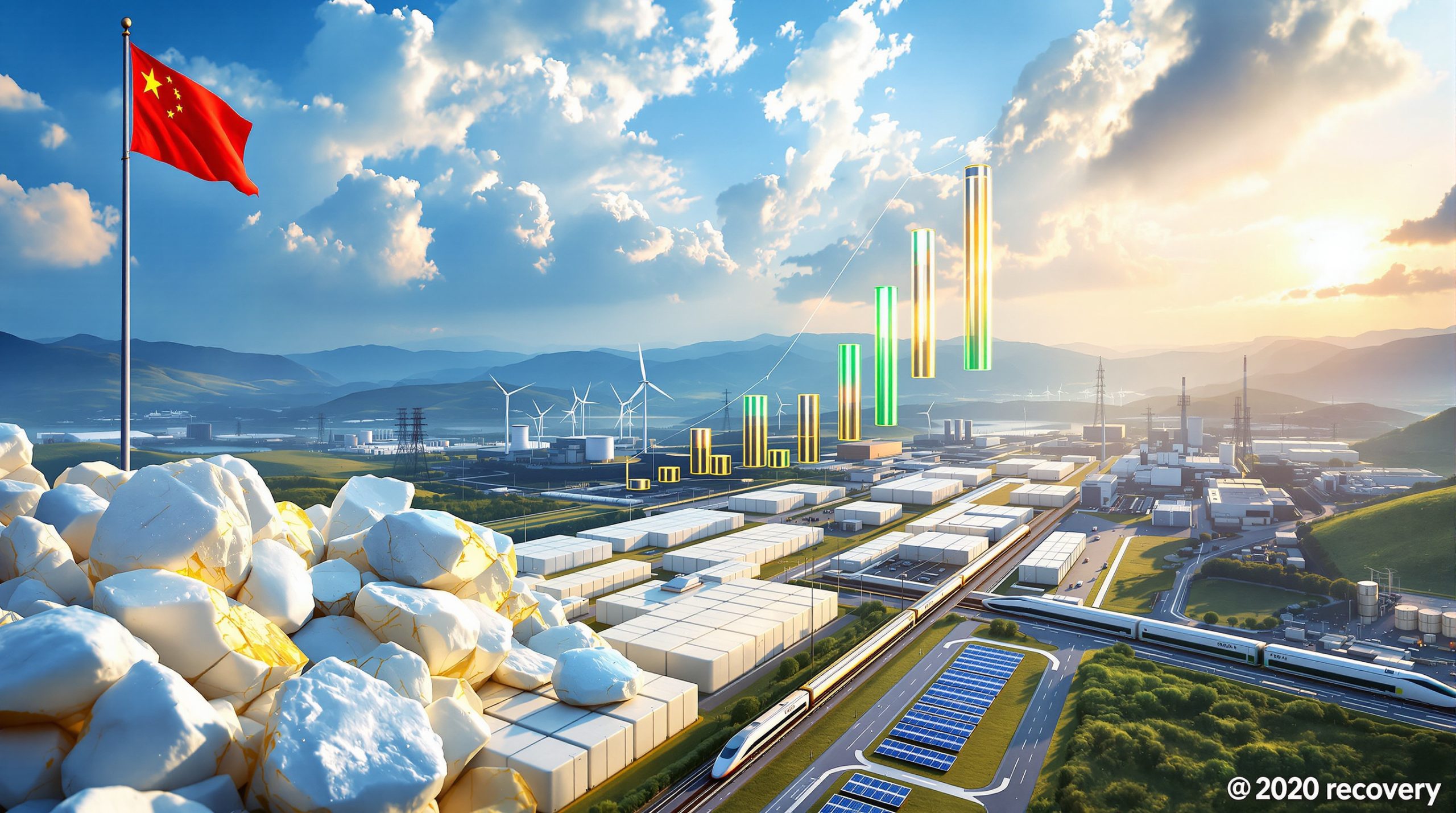Lynas' Revolutionary Heavy Rare Earths Processing Hub in Malaysia
Australia-based Lynas Rare Earths has unveiled an ambitious A$180 million investment to establish a cutting-edge Lynas Malaysia heavy rare earths facility at its existing Malaysian operations. This transformative expansion represents one of the most significant developments in non-Chinese rare earth processing infrastructure, positioning Malaysia as a crucial node in global supply chain diversification efforts.
The facility will process up to 5,000 tonnes annually of heavy rare earth feedstock, dramatically expanding Lynas' separation capabilities beyond its established light rare earth production. Initial production phases will target high-demand elements including samarium, gadolinium, dysprosium, terbium, yttrium, and lutetium, with potential expansion to include europium, holmium, ytterbium, and erbium based on market dynamics.
According to Mining Weekly (Webb, October 29, 2025), this project serves as a cornerstone of Lynas' strategic roadmap toward 2030, strengthening the company's unique position as the sole producer outside China capable of delivering comprehensive rare earth solutions at commercial scale.
Strategic Importance for Global Supply Chain Security
The geopolitical significance of this facility cannot be overstated. China currently maintains control over approximately 85% of global rare earth processing capacity, creating substantial vulnerabilities for Western industries dependent on these critical materials. Furthermore, the International Energy Agency has identified rare earth supply concentration as a primary risk factor for clean energy transition initiatives.
Heavy rare earths serve as essential components across multiple strategic sectors:
• Electric vehicle motors: Dysprosium and terbium enhance magnetic performance in extreme temperatures
• Wind turbine generators: Permanent magnets requiring heavy rare earths for efficiency optimisation
• Defence electronics: Advanced radar and communication systems depend on specialised rare earth elements
• Medical imaging equipment: MRI machines utilise gadolinium-based contrast agents
• Semiconductor manufacturing: Critical for advanced chip production processes
The facility addresses what industry analysts term "supply chain chokepoints" that have created strategic vulnerabilities for technology-dependent economies. By establishing processing capabilities outside Chinese control, Lynas provides Western manufacturers with crucial supply diversification options. In addition, this development aligns with broader defense critical materials strategies being implemented across allied nations.
Market Position Transformation and Competitive Advantages
This expansion fundamentally transforms Lynas' market positioning from a specialised light rare earth producer to a comprehensive rare earth solutions provider. The company's ability to offer customers integrated product portfolios reduces dependency on multiple suppliers while commanding premium pricing for guaranteed supply security.
Heavy rare earths typically command significantly higher prices than light rare earth elements due to their scarcity and specialised applications. Market research indicates dysprosium prices have fluctuated between $300-450 per kilogram over the past 24 months, with analysts projecting sustained premium pricing driven by electric vehicle adoption and renewable energy deployment.
| Element | Current Price Range ($/kg) | Primary Applications | Market Growth Driver |
|---|---|---|---|
| Dysprosium | 350-400 | EV motors, wind turbines | Clean energy transition |
| Terbium | 380-420 | Permanent magnets, phosphors | Electronics demand |
| Yttrium | 32-38 | LED phosphors, ceramics | Technology advancement |
| Samarium | 22-28 | SmCo magnets, nuclear applications | Specialised industrial use |
According to Mariaan Webb of Mining Weekly (October 29, 2025), CEO Amanda Lacaze emphasised the strategic value proposition, noting that market demand for heavy rare earths remains robust, enabling selective customer targeting and favourable pricing negotiations. However, this development must be considered within the broader context of critical minerals energy transition requirements.
Construction Timeline and Production Milestones
The project follows a carefully orchestrated phased development approach designed to minimise operational disruption while maximising capital efficiency:
Phase 1 (April 2026): Initial samarium production utilising Mt Weld feedstock, demonstrating rapid deployment capabilities aligned with customer requirements.
Phase 2 (2027-2028): Full separation capacity implementation for the complete initial product suite, including gadolinium, dysprosium, terbium, yttrium, and lutetium.
Phase 3 (Post-2028): Potential expansion to include additional heavy rare earth elements such as europium, holmium, ytterbium, and erbium, contingent upon commercial viability assessments and market demand validation.
The construction strategy leverages Lynas' existing Malaysian infrastructure, reducing development timelines and capital requirements compared to greenfield projects. Consequently, self-funding through proceeds from the September 2024 equity raising eliminates debt financing complexities and preserves financial flexibility during the construction phase.
Malaysia's Emerging Role in Global Rare Earth Processing
This facility expansion reinforces Malaysia's strategic importance in global rare earth supply chains, building upon more than a decade of operational experience at Lynas' Gebeng facility. The investment positions Malaysia as a critical processing hub for countries implementing supply chain diversification strategies away from Chinese dependence.
The technological capabilities developed through this project contribute to Malaysia's industrial advancement, potentially attracting additional rare earth processing investments and fostering local technical expertise development. Government support for strategic mineral processing aligns with Malaysia's economic diversification objectives beyond traditional commodity exports.
Furthermore, Malaysia's regulatory framework for rare earth processing has evolved to accommodate international best practices while maintaining environmental oversight. The country's established infrastructure and skilled workforce provide competitive advantages for complex chemical processing operations. This development mirrors broader mineral beneficiation opportunities being pursued globally.
Feedstock Supply Strategy and Resource Integration
The facility's feedstock strategy centres on Lynas' wholly-owned Mt Weld deposit in Western Australia, ensuring integrated supply chain control from extraction through final product delivery. Mt Weld represents one of the world's highest-grade rare earth deposits, with total rare earth oxide (TREO) concentrations exceeding 10% in certain ore zones.
The Mt Weld deposit's unique geological characteristics provide consistent feedstock quality essential for efficient separation processes, particularly for heavy rare earth elements that require precise chemical processing parameters.
Potential utilisation of Malaysian ionic clay deposits offers additional supply diversification opportunities. Ionic clay deposits typically contain higher concentrations of heavy rare earths compared to traditional hard rock deposits, potentially improving processing economics for specific elements.
Future supply diversification strategies may incorporate feedstock from other global sources as supply chains evolve and new deposits achieve commercial viability. This flexibility ensures long-term feedstock security while optimising processing economics.
Customer Engagement and Offtake Strategy
Lynas has implemented a sophisticated customer engagement strategy prioritising long-term partnerships over spot market transactions. According to Mining Weekly reporting, offtake agreements will be structured on a price floor basis, providing revenue certainty while maintaining upside exposure during favourable market conditions.
The company prioritises customers where Lynas can fulfil 100% of their heavy rare earth requirements, creating stronger partnerships and potentially commanding premium pricing. This comprehensive service approach differentiates Lynas from competitors offering limited product ranges.
Market segment prioritisation focuses on higher-value applications, particularly electronics industries where pricing typically exceeds commodity-grade markets by 15-25%. This strategy maximises revenue per tonne while building sustainable customer relationships.
Key Customer Targeting Criteria:
• Complete requirement fulfilment: Customers seeking single-source supply solutions
• Premium market segments: Electronics and specialised applications commanding higher prices
• Long-term partnerships: Multi-year agreements providing mutual benefits and stability
• Strategic alignment: Companies prioritising non-Chinese supply chain diversification
Market Impact and Supply Chain Implications
The facility's establishment addresses critical supply security concerns for Western manufacturers, particularly in electric vehicle and renewable energy sectors where heavy rare earths serve essential functions. Increased non-Chinese production capacity could moderate pricing volatility while reducing geopolitical supply risks.
Industry analysts suggest this development may catalyse additional rare earth processing investments globally, potentially accelerating supply chain diversification efforts across multiple jurisdictions. The demonstration effect of successful non-Chinese processing operations provides confidence for similar initiatives in North America and Europe, as evidenced by the European CRM facility initiatives.
Competitive dynamics in rare earth markets are likely to shift as supply diversification reduces Chinese market influence. However, China's established processing infrastructure and cost advantages ensure continued market leadership despite emerging competition.
The facility contributes to what strategists term "friend-shoring" initiatives, where allied nations collaborate to reduce dependencies on geopolitically sensitive supply sources. This trend extends beyond rare earths to encompass critical mineral supply chains broadly, reflecting the ongoing mining industry evolution toward strategic resource security.
Technical Processing Capabilities and Innovation
Heavy rare earth separation requires sophisticated chemical processing techniques due to the similar properties of adjacent elements in the lanthanide series. The Lynas Malaysia heavy rare earths facility will employ advanced solvent extraction and ion exchange technologies optimised for heavy rare earth recovery and purification.
The processing facility incorporates environmental management systems designed to minimise waste generation and ensure regulatory compliance. Advanced filtration and recovery systems maximise resource utilisation while reducing environmental impacts compared to traditional processing methods.
Quality control systems ensure consistent product specifications meeting international standards for electronic and industrial applications. Analytical capabilities include X-ray fluorescence spectroscopy and inductively coupled plasma mass spectrometry for precise elemental analysis.
Processing Technology Advantages:
• Advanced separation efficiency: Optimised extraction processes for heavy rare earth recovery
• Environmental compliance: Integrated waste management and recycling systems
• Quality assurance: Comprehensive analytical capabilities ensuring product consistency
• Scalability potential: Modular design enabling future capacity expansions
Investment Risks and Mitigation Strategies
Despite strategic advantages, the project faces several implementation challenges requiring careful management. Regulatory approval processes in Malaysia could impact construction timelines, necessitating proactive stakeholder engagement and compliance demonstration.
Market demand volatility represents a primary risk factor, as heavy rare earth consumption correlates closely with electric vehicle adoption rates and renewable energy deployment. Economic downturns or policy changes affecting clean energy initiatives could impact product demand and pricing.
Technical execution risks in rare earth separation processes require experienced personnel and proven technologies. Scaling production while maintaining quality standards presents ongoing operational challenges, particularly for elements with stringent purity requirements.
Risk Mitigation Approaches:
• Regulatory engagement: Proactive collaboration with Malaysian authorities ensuring compliance
• Market diversification: Multiple customer segments reducing demand concentration risks
• Technical expertise: Leveraging experienced personnel and proven processing technologies
• Financial flexibility: Self-funding approach eliminating debt service pressures during ramp-up
Economic Impact and Regional Development
The A$180 million investment generates significant economic multiplier effects within Malaysia's Pahang state, supporting local employment and supply chain development. Construction activities alone are expected to create hundreds of temporary positions, followed by permanent operational roles requiring specialised technical skills.
Local supplier development opportunities extend beyond direct facility requirements to encompass maintenance, logistics, and professional services. The project's scale attracts international service providers while creating technology transfer opportunities for Malaysian companies.
The facility contributes to Malaysia's export diversification objectives, generating foreign exchange earnings from high-value processed materials rather than raw commodity exports. This value-addition approach aligns with national industrial development strategies.
Future Expansion Potential and Strategic Options
The modular facility design enables future capacity expansions as market demand evolves and additional feedstock sources become available. Potential integration with downstream processing capabilities could further enhance value capture and customer service capabilities.
Strategic partnership opportunities may emerge with other non-Chinese rare earth producers seeking processing capabilities. Joint ventures or toll processing arrangements could optimise facility utilisation while expanding market reach.
Technology development initiatives may focus on improving processing efficiency and environmental performance while reducing operational costs. Research collaborations with universities and technology partners could accelerate innovation adoption.
The success of this facility establishes precedents for similar investments in other jurisdictions, potentially creating opportunities for Lynas to licence technology or provide consulting services for comparable projects worldwide. For instance, Lynas Corporation continues to explore additional processing opportunities globally.
Conclusion: Reshaping Global Rare Earth Supply Architecture
Lynas' A$180 million Lynas Malaysia heavy rare earths facility represents a watershed moment in global supply chain diversification efforts. By establishing the world's first commercial-scale heavy rare earth separation capacity outside China, this project addresses fundamental supply security vulnerabilities while positioning Malaysia as a critical processing hub for strategic minerals.
The facility's strategic significance extends beyond immediate commercial benefits to encompass geopolitical supply security and technological sovereignty considerations. Western manufacturers gain access to reliable heavy rare earth sources essential for clean energy technologies and advanced manufacturing applications.
For investors and industry stakeholders, this development signals a fundamental transformation in rare earth market dynamics. The demonstration of successful non-Chinese processing capabilities may catalyse similar investments globally, potentially moderating supply concentration risks and pricing volatility that have characterised rare earth markets historically.
The project's phased implementation approach provides risk mitigation while enabling rapid response to market opportunities. As global demand for heavy rare earths accelerates driven by electric vehicle adoption and renewable energy deployment, Lynas' expanded capabilities position the company at the forefront of supply chain evolution.
This analysis is based on publicly available information and industry research. Rare earth market dynamics involve complex technical, economic, and geopolitical factors that may impact project outcomes. Investors should conduct independent due diligence when evaluating investment opportunities in the rare earth sector.
Ready to Capitalise on Critical Minerals Discoveries?
Discovery Alert's proprietary Discovery IQ model delivers real-time alerts on significant ASX mineral discoveries, instantly empowering subscribers to identify actionable opportunities in critical minerals and strategic resources ahead of the broader market. Begin your 30-day free trial today and secure your market-leading advantage in the evolving critical minerals sector.




